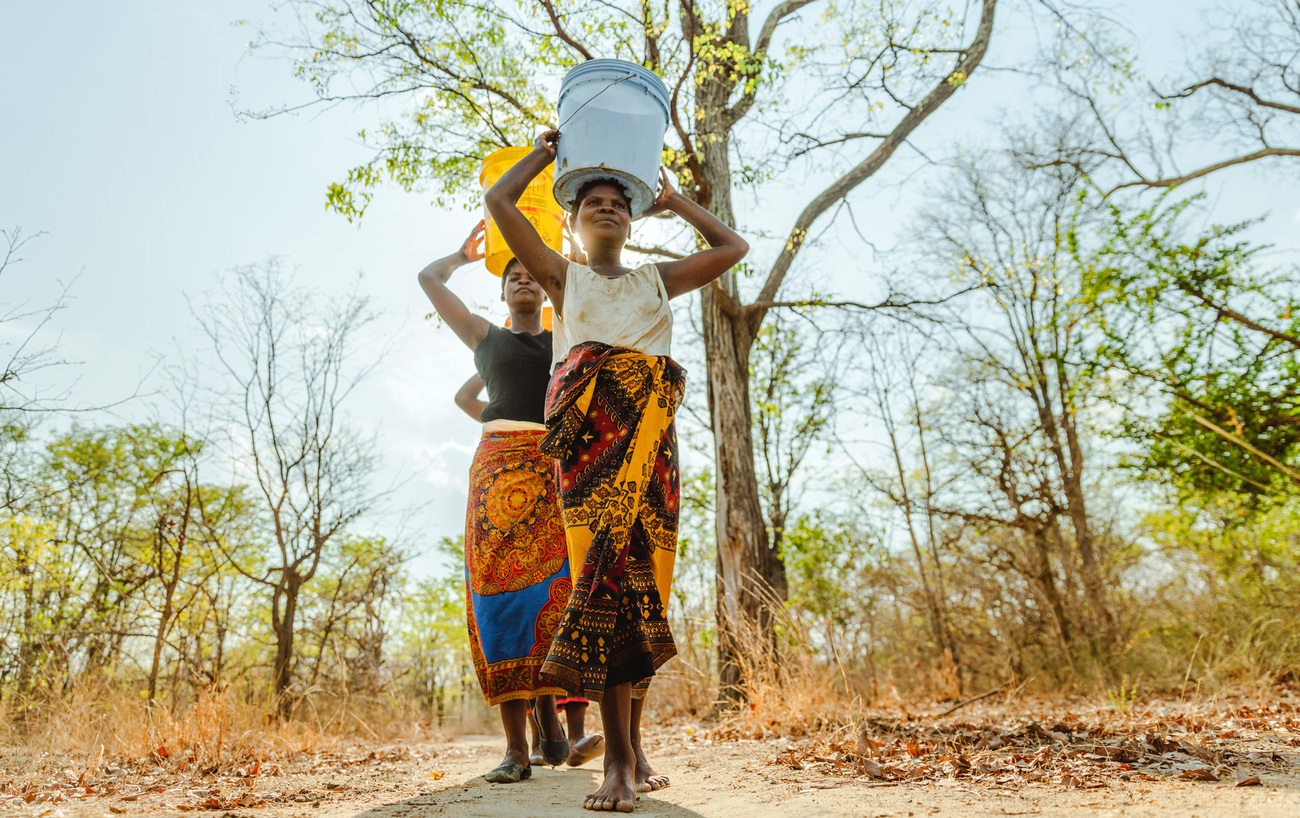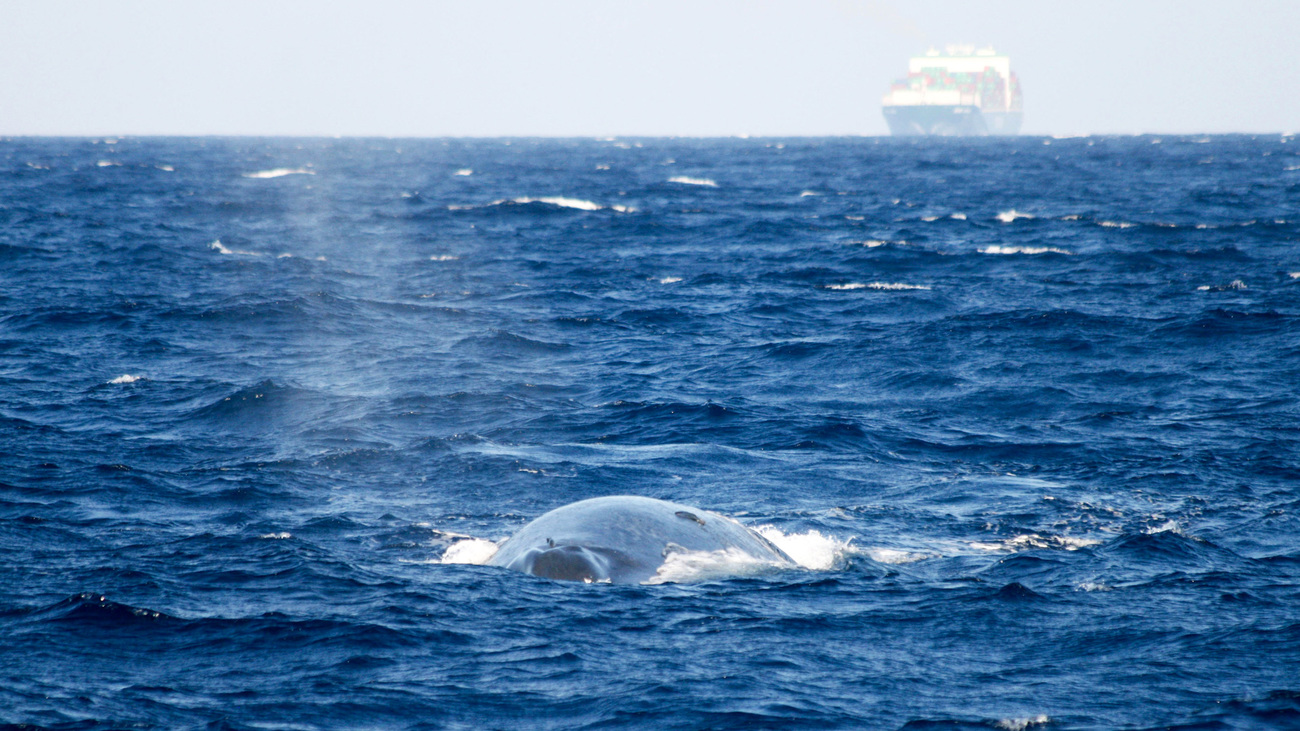Blog
What is Earth Day?
Read moreClimate change mitigation vs. adaptation: What’s the difference?
Climate change is undeniably one of the biggest and most urgent threats to our planet. Global atmospheric warming has already hit 1.5 degrees Celsius above pre-industrial temperatures and is currently predicted to reach 3.0 degrees by the end of the century. This will have catastrophic impacts on animals, biodiversity and people. The impact that climate change is already having on animals and people means we need to build resilience to climate shocks and stress—for both animals and communities–and to support them to adapt to the rapidly changing conditions.

As a global non-profit that works to protect animals and their habitats, IFAW has spent over 55 years making significant contributions to reducing the impacts of the climate crisis around the world. We believe—and have seen firsthand—that the most effective ways to limit, reverse, and adapt to global warming is by implementing two key strategies: climate change mitigation and climate change adaptation. Here’s why.
Put simply, climate change mitigation refers to all actions taken to slow down—and ideally reverse—the effects of climate change. The goal is to reduce the amount of greenhouse gases—a gas that traps heat and makes the earth warmer—emitted into the atmosphere to stop the warming of our planet. But how do we do that?
Climate change mitigation is urgently needed and must be implemented much faster than it currently is in order to ensure that we avoid the worst possible impacts, and safeguard a safe and healthy future for animals, children, and future generations.
There are already a number of established practices in the realm of climate change mitigation. Let’s take a look at a few.
According to the Intergovernmental Panel on Climate Change—a United Nations body—the best way to avoid runaway global warming and all its negative effects is to deliver rapid decarbonisation and achieve net zero emissions by 2050. Under the terms of the United Nations Framework Convention on Climate Change, governments around the world are legally obligated to reach net-zero emissions.

While climate change mitigation is about addressing the problem head-on, climate change adaptation involves learning to adjust to the effects of climate change. It’s undeniable: the Earth’s climate is changing. We need to adjust our lives and environments to handle new weather patterns, rising sea levels, and other changes that result from climate change. This is especially urgent for the most vulnerable communities, people, and wildlife—those who are most at-risk due to climate change.
Climate change adaptation can be implemented on all scales. It refers to how a country or community, an industry like agriculture, or an ecosystem and its wildlife are adapting to climate change.
The reality of our warming planet is inescapable. While we try to curb the rising temperatures, these are some examples of how we must adapt to the new reality.

Both climate change mitigation and adaptation are important because they address different parts of the climate change problem. One strategy isn’t better than the other. In fact, neither would be sufficient by itself.
Mitigation and adaptation need to work hand-in-hand to protect our planet and our way of life. On one hand, mitigation focuses on reducing the amount of greenhouse gases we release into the atmosphere. We’re trying to slow down global warming and prevent further climate change.
Meanwhile, adaptation is about tangible, actionable solutions that will help us in the short term while our mitigation strategies come into effect. They’re just as important, as they protect communities and ecosystems from the changes we can’t prevent.
Climate change mitigation and adaptation are also important to climate justice. Realistically, not every country can invest the same amount of capital and resources into climate change mitigation and adaptation strategies. More affluent countries should be investing heavily in mitigation strategies, as they have the resources to do so, while countries with smaller economies work on small-scale, local adaptation tactics.
Effective climate action requires both preventing further damage and preparing for the inevitable changes to come. And let’s not forget: although mitigation and adaptation are both necessary now, the less we choose to mitigate today, the more adaptation we’ll need to do later down the line.
At IFAW, we’re well aware of the benefits of using both climate change mitigation and adaptation strategies to fight the effects of our warming planet. We see firsthand the damage that climate change inflicts on ecosystems and wildlife, and we’re dedicated to working as hard as possible to reverse it.
The three pillars of our climate work are adaptation, mitigation, and addressing loss and damage. Let’s take a look at some of the climate projects we have completed or are currently running.
We acknowledge that climate change has already affected—and is still affecting—animals and their habitats across the globe. This means that our plans need to factor in these changes and ensure this flora and fauna is resilient enough to adapt to what’s still to come.
This involves working with conservation agencies, governments, and local communities to ensure they understand the risks of climate change and the importance of conservation management plans. For example, in Africa, IFAW is working to ensure that elephants and other animals have access to water during elongated drought periods brought on by climate change.
Ecosystems are more intertwined than we often realise. For example, higher winter temperatures in the mountains may impact alpine creatures directly, but will also affect water sources for mammals living thousands of kilometres downriver.
Through IFAW’s Room to Roam initiative in Africa, we’re working with local conservation agencies to ensure the presence of safe wildlife corridors for roaming and migratory animals, including elephants. We’re aiming to connect core elephant populations from Zimbabwe to Kenya, keeping them away from human populations and increasing the animals’ long-term resilience.
Sadly, the reality of climate change is that weather events and warming patterns are directly jeopardising the lives of animal populations. This is why disaster response and animal rescue are key to IFAW’s wildlife conservation approach .
We have airlifted an orphaned elephant calf in Zimbabwe and rebuilt koala habitats following devastating bushfires in Australia. We’ve also responded to floods, wildfires, hurricanes, earthquakes, and other disasters around the globe. Building resilience is key to our disaster response work—not only are we responding in wake of disasters, but we’re also helping communities prepare for them before they happen.

Poaching and other types of wildlife crime pose a very real threat to the biodiversity of our planet. Wildlife trafficking removes animals from their wild populations and sometimes become displaced into a different ecosystem, potentially harming other species, and when species are high in demand, their own populations can become depleted. Some species that are targeted include keystone species, like elephants, sharks, and jaguars, whose ecosystems rely on them.
IFAW works to combat illegal wildlife trade and poaching, and we collaborate with law enforcement and other organisations to protect wildlife from these crimes.
We have led successful efforts to rescue animals from the illegal pet trade and have been involved in game-changing policy restructure to protect animals that are frequent poaching victims.
Helping to protect marine life is a huge part of what we do at IFAW. Currently, we’re working to protect the last remaining North Atlantic right whales, a species which is key to carbon sequestration and helps maintain balance in their ecosystems. In addition, we are advocating for shipping companies in the Mediterranean to redirect their shipping lanes away from endangered whales—so far, seven companies have signed on.

Effecting change isn’t just about physically protecting animals, but ensuring they have adequate legal protections, too. IFAW is committed to working at a policy level, representing animals that are endangered and can’t speak for themselves.
And it’s working. In recent years we have shut down ivory markets in the U S, the U K, and China to limit elephant poaching. We’re currently lobbying the US Congress to pass a bill that would see dangerous fishing gear replaced with ropeless alternatives, which would reduce collateral damage during commercial fishing.
Of course, we’re advocating in the realm of climate change mitigation and adaptation, too, pushing for more financial investment and the recognition of wildlife conservation. Read our new report on the role of wildlife conservation and ecosystem protection in addressing the climate crisis.
IFAW is also committed to ensuring that communities highly susceptible to the impacts of climate change are ready to protect themselves, their land, and their livelihood.
Poverty and food insecurity can drive people to engage in activities like poaching, overfishing, and deforestation. These issues heighten when communities face climate-related disasters.
This is why we have a responsibility to help communities become more resilient to the challenges they face as a result of climate change and adapt to climate- and wildlife-friendly livelihoods that don’t rely as much on natural resources.
We work to provide disaster risk management and career training to at-risk communities, allowing them to generate sustainable incomes for their families.
The problem of climate change is urgent and complicated. These life-saving climate mitigation and adaptation strategies can only be achieved with your help. Learn how you can get involved and take action for the planet.
Our work can’t get done without you. Please give what you can to help animals thrive.
Unfortunately, the browser you use is outdated and does not allow you to display the site correctly. Please install any of the modern browsers, for example:
Google Chrome Firefox Safari